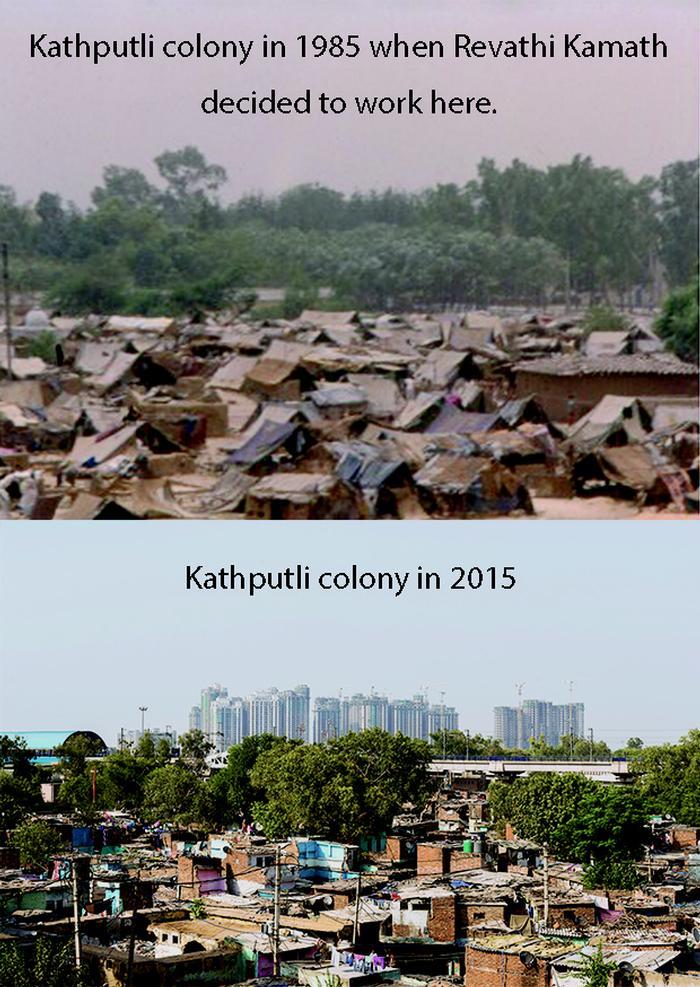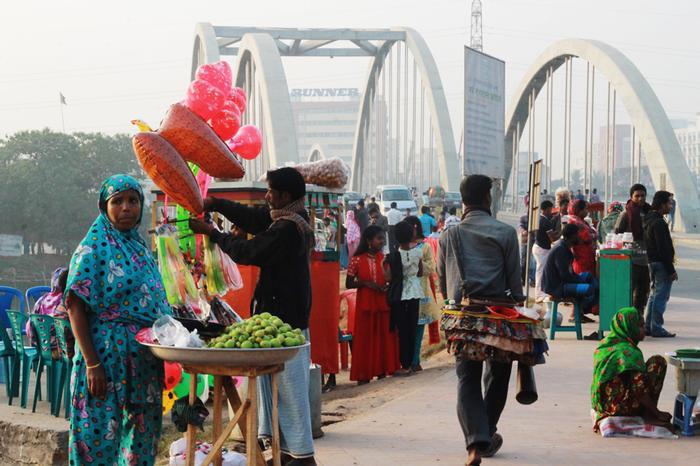Nicole Oliveira - EssayUntil when will the real estate market dictate the rules?The landscape I can observe from my bedroom window has been undergoing big changes, demolition sites and cranes have replaced the single-storey houses that used to line the neighborhood streets. Before I observed simple homes most of which were inherited by the children and grandchildren of workers employed in the surrounding factories. These houses consisted of a living room, one or two bedrooms, a kitchen and small bathroom, yet now the horizon has slowly transformed into luxury residential buildings that are, on average, twenty-storey high. Tatuapé neighbourhood, where I live, after the 90’s, became a major target of the real estate market, due to factors such as: the abandonment of the once thriving industry in the region, its geographical proximity to the city center, easy access to important transportation routes including the neighbourhood’s own subway station.
In 2019, São Paulo was responsible for 32% of the national GDP according to data from the state government, which suggests lots of environmental, social and economic change. With this in mind, there is an increasing search for new areas of the city to investin. However, the re-development of a particular region through aesthetic enhancement and verticalization also has downfalls and the quality of life marketed in real estate advertisement is also misleading. The socio-environmental transformations that take place with the emergence of a new and recognizable neighborhood such as Tatuapé, have generated urban-scale issues that can be traced back to the lack of urban planning. This, in turn, produces patterns of segregation in which areas of vegetation or spaces dedicated to leisure activities, are accessed and endorsed only by the city’s elite. In other words, the city is motivated by profit and not by its inhabitants.
According to research conducted by Sebrae, in 2019 civil construction was responsible for 6.2% of Brazil's GDP, with most of the jobs carried out by private construction companies. Due to this, they determine what should be built, for whom to build and what capital to use. The building dynamic dictated by these companies have resulted in a city that is increasingly cut by walls, fractured, uneven and segmented. An example of this is the outstanding growth in density of informal settlements, like favelas, when compared to the city as a whole. This disparity is even more notable when comparing the favela growth index against the population density of São Paulo’s city centre, where there is the largest number of properties without inhabitants and subject to price speculation.
During the Covid-19 pandemic, developers, contractors, investors and real estate operators mobilized new strategies in order to create an opportunity out of the health crisis. These new proposals are not intended to facilitate home purchases for the low-income population, but rather the production and marketing of high-end units that are in the hands of the construction companies. For example, in the midst of a pandemic, when people need to stay at home, thousands of families have been removed from their homes. This fact reveals that some civil construction companies have no intention of helping low-income families and that the pandemic presented an opportunistic justification for changes in the laws that would favour certain businesses and groups. So, how long will we allow the housing market to govern the city’s urban plans?
It is more profitable for the real estate market to build residential complexes than culture centres, healthcare facilities or sports arenas. As a consequence of this, new hubs created within the city, such as Tatuapé, have a low concentration of public facilities and services like homeless shelters and open spaces for leisure and/or entertainment. Additionally, there is a serious lack of job opportunities locally, which leads to heavy vehicle traffic and overcrowding of the public transport system. According to the São Paulo metro portal, it is estimated that 1.5 million people use the subway daily in order to travel from the east side, where Tatuapé is located, of the city and closer to the centre.This also highlights the need to install social facilities within the community.
The speed of unrestrained and unplanned construction generated a territorial concentration of enterprises, which directly creates the need for services and commerce. "In correlation to the high and medium-high standard settlements, services and other commerce are implemented to to service at that level, which sets in motion a mechanism of valorization and qualification: the neighborhood is coveted for its infrastructure, and a demand that increases as more high-earning population move into the area", prove (ROLNIK: 2000, p. 94). The high cost of living is a problem for residents and tradespeople in the neighborhood, who find it difficult to keep up with the new social and economic standards.
This trend of the real estate market influencing the dynamics and patterns within the city attracted attention in London during the 1960’s. At the time, several gentriers migrated to a neighborhood that, until then, housed the working class, driving up the real estate prices and causing the expulsion of old residents in order to comfortably accommodate the new “locals”. This process is called gentrification and can be understood as the process of ennobling or elitizing an area. The phenomenon still happens in London and is increasingly taking place in cities around the world.
A recent example would be the gentrification of California in the 1990's: extreme upgrading of real estate and abusive increase in rental prices, due specifically to the growing demand from the tech community that settled in the area. In 2015, 62% of
low-income families in California were living in risky neighborhoods or were already experiencing eviction processes because of the real estate boom, according to research from the Urban Displacement project. The Washington Post reported a very alarming panorama for gentrification associated with the tech and innovation sector: there are 134,000 homeless people in two decades of gentrification occurring in the state that, alone, holds the 5th largest GDP in the world.
The the territories mentioned above, that suffer from pressure in the real estate market, are already taking action. In the case of California, an Urban Displacement platform developed a study that highlighted the urgent need to increase access to affordable housing and stabilize communities across the city. They also point toward a need for policies that could reduce the unequal access to neighborhoods that supply several resources and services, stabilize rent prices in areas where these are rapidly rising in order to prevent displacing residents, and ensure opportunities to reduce and institute support for those living in poverty. These are attempts to preserve the territory that low-income communities occupy.
In London, for example, a multidisciplinary collective that works with architecture, design and art, called Assemble, realized a project by means of their own initiative and transformed a gas station on Clerkenwell Road into a cinema. As an experiment that could potentially lead to the re-adaptation of the UK's four thousand empty gas stations. With cheap industrial materials, recovered or donated, Cineroleum was built on site by a team of more than one hundred volunteers that learned and experimented by using instruction manuals written during the prototyping process. Actions like these invite the public to actively experience the urban space.
Although I realize that a good part of my community has already accepted this new neighbourhood configuration, as a future architect I should strive to not operate thinking of profit but prioritizing people instead. With this in mind, I believe that two activities caused by the real estate speculation could be used as loopholes: misused properties in the city of São Paulo, which could be repurposed, and lots that are left empty in hopes of driving up prices, and could be used for other activities in the interim.
In São Paulo, specifically, utilizing these idle spaces would improve the population's interaction with the city at an urban scale. According to the city’s 2014 masterplan, which is estimated to last until 2030, all construction jobs have up to two years to start building and five years for the project to be completed. If this does not occur, the land will be disregarding its social function and becoming an idle region, and can receive a penalty of paying a progressive property tax.
Considering these questions, ephemeral architecture can be an answer to many problems since non-permanent apparatus’ could supplement the basic needs of the community, as in the case of London. In my local community, I see the potential for projects like these in the countless empty lots currently being used as parking lots in order to drive up prices. Even if these constructive practices are installed for a limited time, they send a message to the population that there is no need to sacrifice urban well-being for real estate profit and that even little change can be effective and beneficial.
Furthermore, I also believe that more focused studies would better guide real estate developments and supply information for more assertive devices to be implemented for a particular context. As it happened in California, for instance, the choice to conduct research of and map low-income communities proved to be extremely useful so that city planners and architects could elaborate on non-generic proposals. Likewise, these studies would be the first step in establishing the best programs to implement in the empty lots and buildings in my neighbourhood. Additional Help and InformationAre you in need of assistance? Please email info@berkeleyprize.org. |




